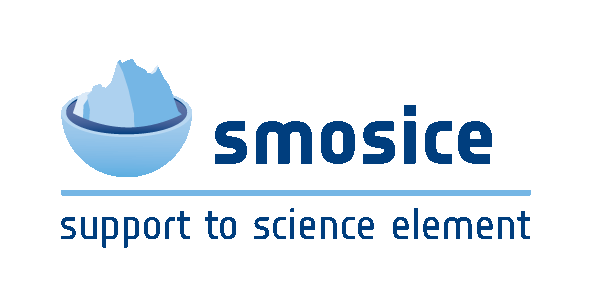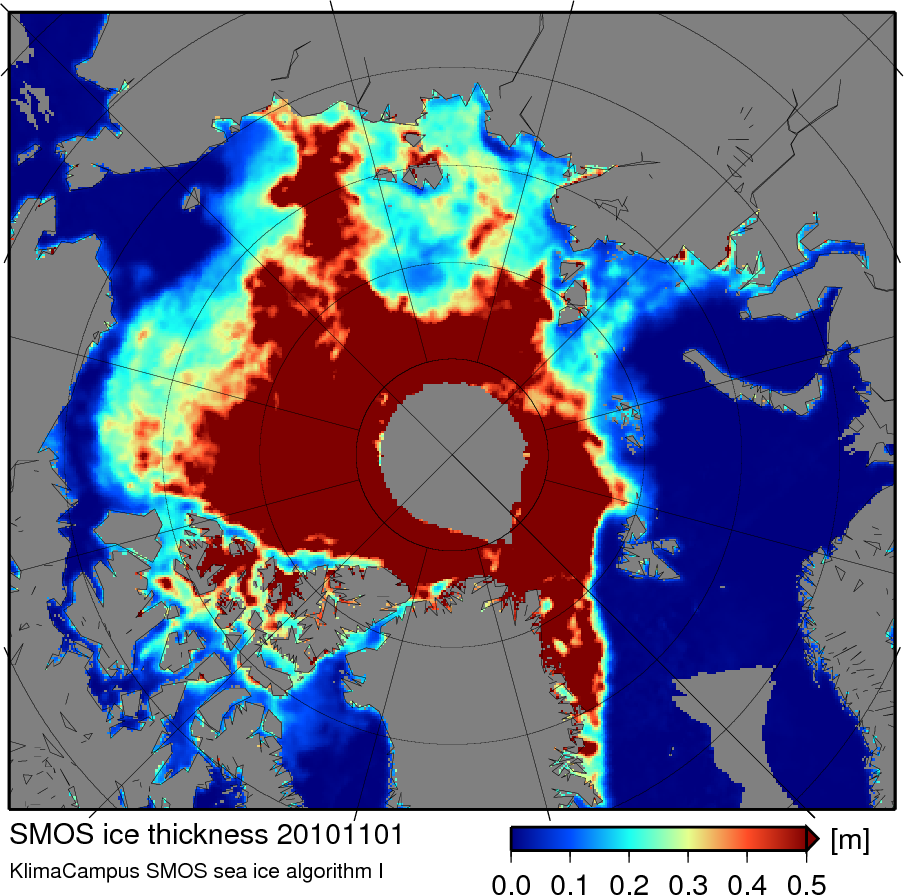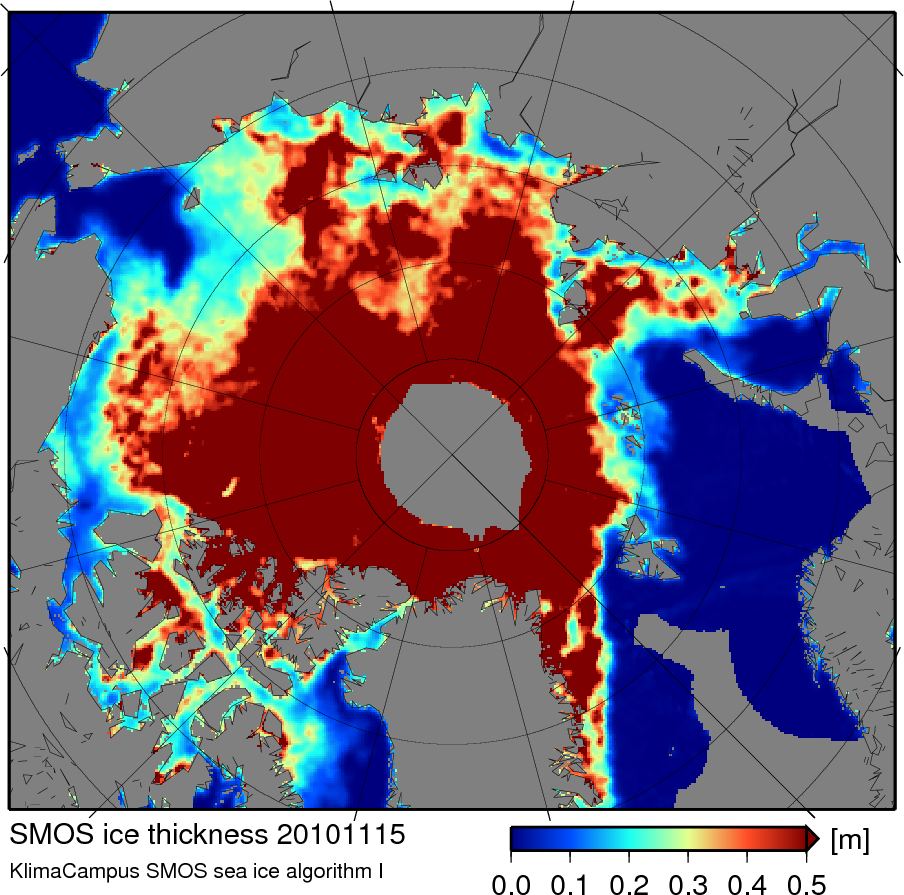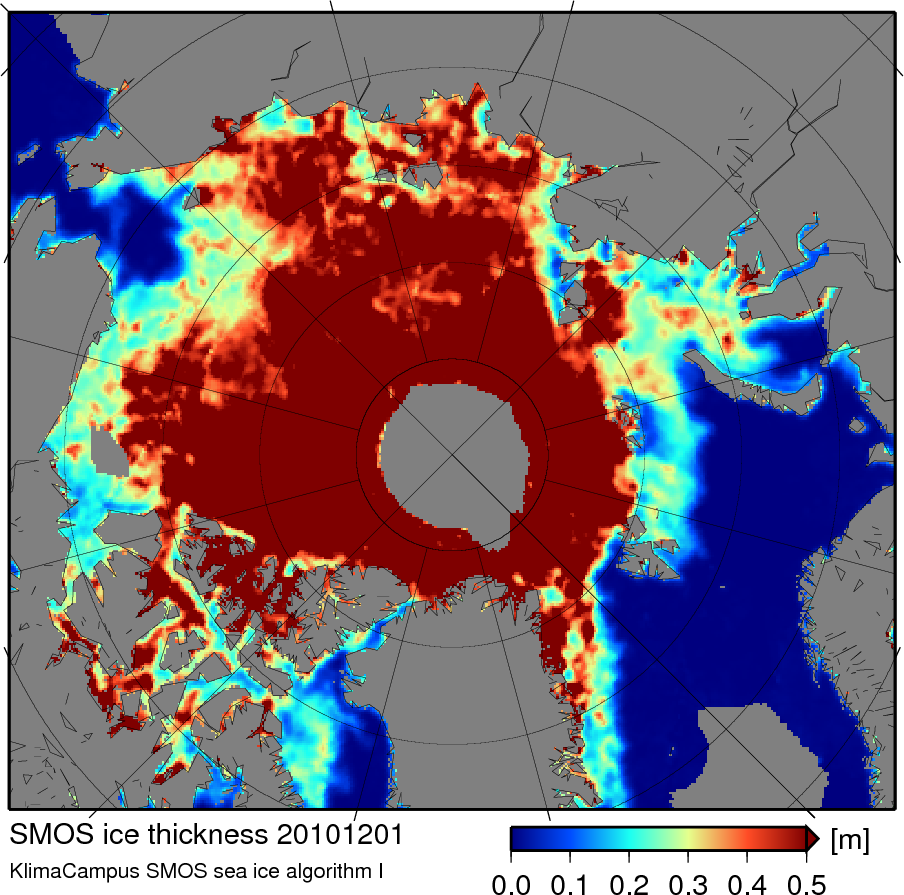|
Size: 4307
Comment:
|
Size: 4288
Comment:
|
| Deletions are marked like this. | Additions are marked like this. |
| Line 35: | Line 35: |
| A workshop to present the new SMOS ice thickness product, as well as the scientific and technical outcome of the ESA SMOSIce study took place at the [[http://www.klimacampus.de/631+M5bbd728e1df.html?&L=1|KlimaCampus]] of the University of Hamburg. | A [[http://www.klimacampus.de/631+M5bbd728e1df.html?&L=1|workshop]] to present the new SMOS ice thickness product, as well as the scientific and technical outcome of the ESA SMOSIce study took place at the University of Hamburg. |

Project description
The aim of the SMOSIce study is to develop, improve and validate algorithms for sea ice thickness retrieval from the 1.4 GHz (L-band, wavelength=20cm) data of the European Space Agency's (ESA) Soil Moisture and Ocean Salinity (SMOS) mission. SMOS payload is the Microwave Imaging Radiometer Using Aperture Synthesis (MIRAS) measuring the brightness temperature at a range of incidence angles and at different polarizations.
Electromagnetic radiation with wavelengths of 20cm can emerge from deep inside the sea ice layer. The attenuation mainly depends on the relative brine volume which is a function of ice bulk salinity and temperature. The penetration depth is up to 1.5m for cold low-salinity ice and reduces to a few centimeters for saline sea ice at high temperatures. The potential to derive the ice thickness from L-band radiometry thus depends on sea ice temperature and salinity.
A sea ice emissivity model is an integral part for the retrieval of ice thickness from SMOS measurements. The most simple setup consists of a three layer (ocean-ice-atmosphere) dielectric slab with plane-parallel specular surfaces (Kaleschke et al.,2010). The dielectric properties are parameterized as a function of the bulk ice salinity and temperature. One main objective of the SMOSIce study is to define the Algorithm Theoretical Basis Documents (ATBD) for SMOS sea ice retrieval, as well as to generate a SMOS sea ice product. This product is assessed using independent ice thickness measurements mainly from thermal infrared satellite imagery (MODIS) as well as from electromagnetic induction (EM) measurements.
First results
SMOS provides a daily coverage of the polar regions with a resolution of about 35km and can be used to measure sea ice thickness up to half a meter (Kaleschke et al. 2012). The ice thickness derived from SMOS agrees with the ice thickness from thermal infrared MODIS images with 10cm standard deviation. SMOS thickness retrieval is well feasible and practical under ideal cold conditions such as typically encountered during the Arctic freeze-up period. Changes in ice concentration and ice temperature, as well as the snow thickness are the largest uncertainties which are neglected for the first operational prototype of a retrieval algorithm (SMOS sea ice algorithm I) based on (Kaleschke et al.,2010).
Sea ice thickness during the Arctic freeze-up as seen by SMOS



SMOSIce User Workshop
A workshop to present the new SMOS ice thickness product, as well as the scientific and technical outcome of the ESA SMOSIce study took place at the University of Hamburg.
